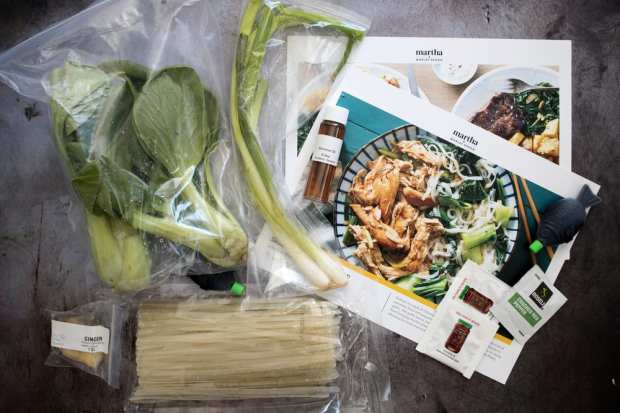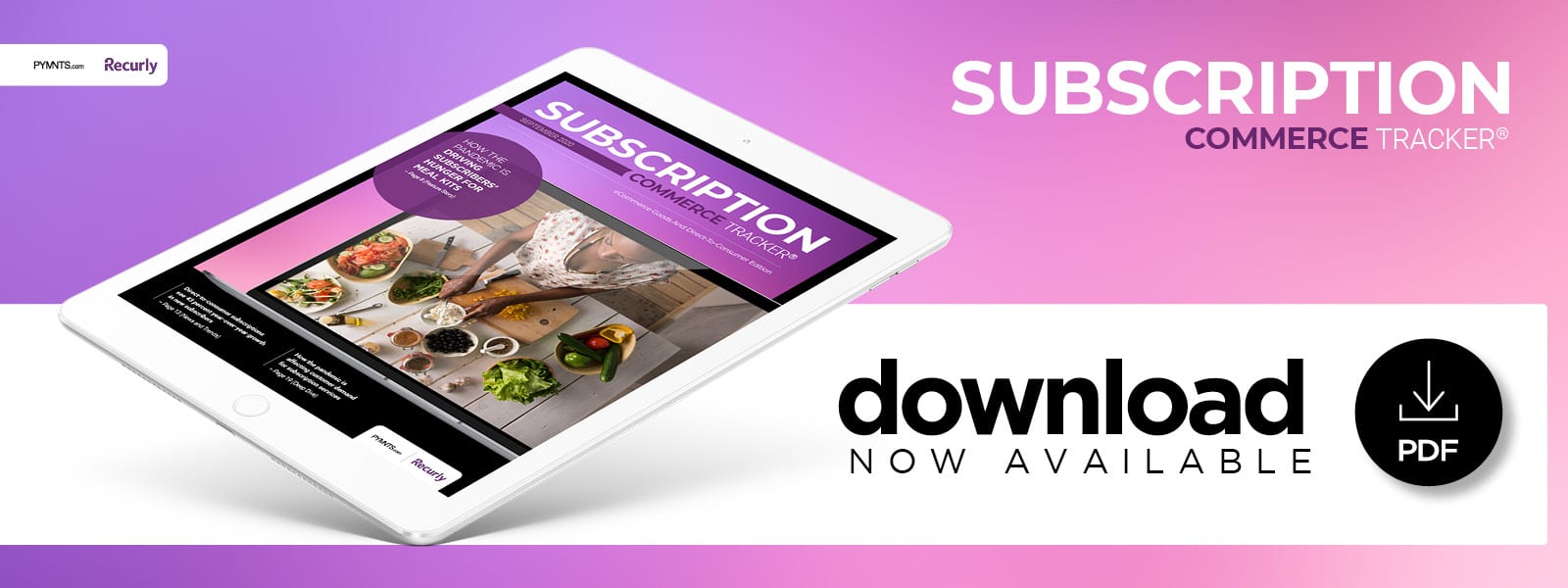How The Pandemic Is Driving Subscribers’ Hunger For Meal Kits

People like the convenience of subscribing to meal-kit services, but not always how much they cost. In the PYMNTS Subscription Commerce Tracker®, Julie Marchant-Houle, U.S. CEO of Marley Spoon and Dinnerly, explains how budget-friendly, high-frequency plans are becoming key to retaining consumers who crave convenience — and affordability — now more than ever.
Consumers are showing an increased appetite for meal kit subscription services as public health risks have made them think twice about grocery shopping.
Restaurant dining spaces have largely remained closed, and remote work policies have led many to eat meals they otherwise would have gotten at or near their workplaces at home. The pandemic is helping drive the meal kit subscription market to reach a predicted $20 billion by 2027, a compound annual growth rate (CAGR) of 13 percent.
Meal kit businesses, such as Martha Stewart’s partnership Martha & Marley Spoon and affordable family-targeted Dinnerly, have seen sharp increases in new subscriber enrollments and observed existing customers scheduling more frequent deliveries and larger ticket sizes, according to the brands’ U.S. CEO, Julie Marchant-Houle.
“It really did a hockey stick on both brands. … [We’re seeing] quite dramatic growth,” Marchant-Houle said in a PYMNTS interview. “Customers in lockdown are not necessarily able to go … or comfortable going to grocery stores.”
This rise in subscriptions is likely no flash-in-the-pan event, either. Marchant-Houle predicted that consumers who try meal subscriptions during the pandemic will become accustomed to them and largely maintain these habits even after a vaccine becomes available, building long-lasting behaviors.
“My expectation is we’ve created a habit,” she said. “The pandemic has lasted longer than any of us anticipated. After a number of weeks, this [purchasing behavior] just starts to stick.”
Thinking Outside The Box
The early days of the pandemic saw customers panic-buying as they sought to stock their pantries and some items became harder to find. Virus outbreaks at meatpacking factories forced shutdowns, making protein more difficult to secure. Farmers struggled to redirect supply chains that had once gone to restaurants, and concern grew that issues impacting migrant workers would reduce the ability to sufficiently harvest crops.
The impact has been mixed but not dramatic on Martha & Marley Spoon’s and Dinnerly’s operations, Marchant-Houle said. Although its supply chains are largely intact, the company experienced some disruptions that necessitated quick adjustments to recipes, swapping one type of produce for another, for example. It has been able to leverage this stability to expand services, such as by offering customers hard-to-obtain items to which the company has access through existing vendor relationships.
“In the early days of [the pandemic], a lot of customers were having difficulty getting meat — the protein industry was heavily impacted, and so the supply chain was quite constrained,” Marchant-Houle explained. “We didn’t have that [limitation]. We were able to offer protein packs of two chicken breasts, two sausages, two steaks, whatever — we have a number of different combinations.”
In addition to adding extra side items to their meal boxes, subscribers are also now selecting boxes that include more servings. Martha & Marley Spoon and Dinnerly meal boxes are often purchased by two-person households, but the brands have seen their customers’ families grow in size. Many adult children who were living on their own returned to their parents’ homes to better care for them, avoid the isolation of one-person apartments or decamp from cities to more spacious suburbs. This has driven many subscribers to switch from boxes designed to feed two people to those that serve four or more, increasing the average ticket size.
Consumers who used to turn to meal subscriptions once or twice a week to spice up their home cooking routines are upgrading plans to receive delivery more often, too. These trends have been significant enough to spur the business to develop a new, higher-frequency subscription plan that provides six weekly meals.
Designing meal kits that stay exciting and fight subscription fatigue — especially for customers who are now receiving them more often — requires an emphasis on variety, Marchant-Houle said. This has to be done without going too far afield, however. A wide range of recipes keeps meals appealing, but a business will not stay cost effective if too many dishes appeal only to the palates of niche diners. This balance requires staying within certain core cuisine categories and innovating within them, such as by providing several recipe options each based around chicken, pasta and beef, for example.
A Fresh Look At Meal Kits
More time spent at home is not the pandemic’s only major impact on consumers as the accompanying job losses and economic downturn have left many customers hurting financially. Meal kit providers that want broad appeal need to be able to make the case that they deserve a spot in consumers’ budgets. These services are more expensive than visits to the grocery store by nature because they include the costs of shipping, recipe curation and packaging.
“[Meal kits] tend to be a bit more of a premium product and less inclusive,” Marchant-Houle said.
The pandemic has caused many consumers to reprioritize how they want to spend their money, and meal subscriptions looking to keep budget-wary customers loyal may need to rethink their strategies. This could include leaving garnishes like fresh parsley off of menus to lower price points, which may be more appealing to increasingly cost-conscious customers.
Meal subscription providers are taking fresh looks at consumers’ needs during the pandemic, and many are well-positioned for serving housebound consumers who are avoiding public spaces like grocery stores and wanting more convenient or interesting meals. Designing product offerings with an eye toward consumers’ shifting tastes could help these subscription plans win a permanent spot on U.S. households’ dinner tables.

